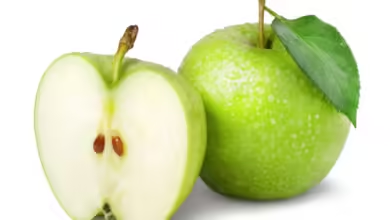Ice Apple: The Refreshing Wonder of Tropical Fruits

Introduction:
Ice Apple, also known as “Tadgola” or “Nungu,” is a unique tropical fruit with a crisp, refreshing taste. It is the perfect treat to beat the heat, particularly in regions with hot climates. Its translucent, jelly-like texture and mildly sweet flavor make it a favorite among those seeking a natural, hydrating snack. Native to Southeast Asia, the Ice Apple is much more than just a refreshing fruit; it is rich in nutrients and offers various health benefits. In this article, we will explore the origins, health benefits, culinary uses, and much more about this exotic fruit.
1. What is Ice Apple?
This section will provide a detailed description of the Ice Apple, including its scientific name (Borassus flabellifer), its appearance, and how it is harvested from the palm tree. Description and Physical Characteristics:
Ice Apple is a round, translucent, jelly-like fruit that grows inside the fruit of the Palmyra palm tree. The fruit has a white, semi-transparent flesh that resembles ice cubes, hence the name .
- Cultivation and Habitat:
Found in tropical and subtropical regions, especially in India, Southeast Asia, and parts of Africa, this fruit thrives in hot climates with well-drained soil.
2. Health Benefits of Ice Apple
This section can highlight the nutritional content and health benefits of the fruit. is rich in vitamins and minerals, including calcium, potassium, and iron, making it beneficial for hydration, digestion, and overall health.
- Hydration and Cooling Properties:
Known for its high water content, helps maintain body hydration, especially in hot weather. Its cooling effect makes it a natural remedy for heatstroke and dehydration. - Boosting Digestion and Immunity:
contains dietary fiber, which promotes digestion, and antioxidants that help strengthen the immune system. - Nutritional Value:
Discuss the various vitamins (like Vitamin C) and minerals (such as calcium and potassium) present in explaining how they contribute to bone health and reducing muscle cramps.
3. Culinary Uses of Ice Apple
Here, you can explore the various ways is enjoyed in culinary traditions. It is often eaten raw, but there are many creative uses for this fruit in different cuisines.
- Raw Consumption:
The most common way to eat is by peeling away its outer skin and enjoying the soft, jelly-like flesh. Desserts and Beverages:
can be used in making desserts like ice apple pudding, or incorporated into drinks like smoothies, juices, and traditional beverages, especially in summer. - Savory Dishes:
In some cultures, is used in savory dishes, combined with spices, herbs, or in salads for a refreshing, crunchy texture.
4. Ice Apple in Traditional Medicine

In this section, you can explore how Ice Apple has been used in traditional medicine, particularly in Ayurveda and folk remedies.
- Ayurvedic Benefits:
has cooling properties, which make it a popular remedy in Ayurveda for conditions like acidity, digestive issues, and heat-related ailments. - Folk Remedies:
is also used in folk medicine to treat skin conditions, and to provide energy and stamina during hot weather.
5. The Environmental Impact and Sustainability of Ice Apple
Discuss how the Palmyra palm tree, the source of is a sustainable resource. The fruit and its byproducts (like leaves and wood) contribute to local economies, and the tree itself has a relatively low environmental impact.
6. How to Select and Store Ice Apple
This section can guide readers on how to select the best at the market and how to store them to preserve their freshness.
- Selecting the Best Fruit:
The best are those that feel firm and have a clear, translucent appearance. Avoid those with cracks or discoloration.
7. Ice Apple in Popular Culture
Whether in food festivals, literature, or art, this fruit has a unique place in the cultural imagination.
Media and Pop Culture:
might also have appeared in regional movies, songs, or food blogs as a symbol of refreshing vitality or the tropics.
- Conclusion
Wrap up the article by summarizing the key points discussed. Emphasize the unique appeal of as a tropical fruit, its versatility in cuisine, its health benefits, and its cultural significance. Encourage readers to try this refreshing fruit and explore its diverse uses in their diet




